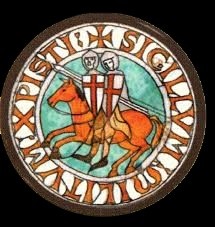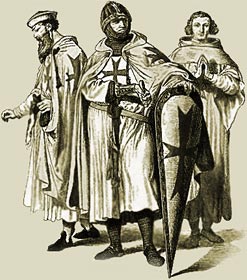The Rise of the Templar Knights.
All dates are shown in Julian Calendar, which was used until 1582!
The Knights Templar trace their origin back to shortly after the first crusade. In 1103 a French Nobleman from the Champagne region, Hugues de Payens, assembled eight Knights and lay before them his idea of protecting pilgrims on their journey from various harbor towns like Jaffa and Ashdod to Jerusalem. After successful implementation and multiple travels to the Holy Land, the Knights were summoned by King Baldwin II,
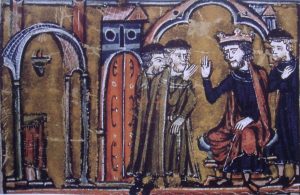
who offered them to set up headquarters in Jerusalem. He gave them free accommodation and horses as well as stables under the area of the former Temple. Today the Al-Aqsa Mosque is standing exactly on that place.
Little was heard of them for the next few years. After traveling back and forth between the Holy Land and France; by 1118 their purpose of guarding travelers became secondary and they formed ‘The poor Fellow Soldiers of Christ’. On the 14.01.1129, after advice from the Holy See, they were formally approved at the council of Troyes and became armed monks. Since 1130 they were very well known as ‘Order of Solomons Temple’. Their fundraising campaigns asked for donations of money, land or Noble-born sons to join the Order, with the implication that donation would both help to defend Jerusalem, and to ensure the charitable giver of a place in heaven. Donations to the Order were considerable. For example in the year 1130, the King of the Iberian Peninsula; Alfonso I. of Aragon, left large tracts of land to the Order. Unfortunately upon his death in 1134 his descendant Ramiro II. which was his brother; decided not to advocate the last will and incorporated the land into his realm.
01.10.1189 – Gerard de Ridefort, Grandmaster since 1184, was killed at the siege of Acre.
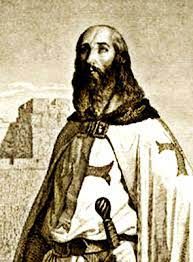
13.10.1244 – Jacques de Molay, the last Grandmaster was born on this day in Saint Mars la Brière; in the province of Pays de la Loire.
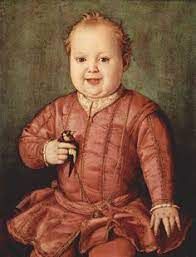
New members to the Order had to swear religious vows of obedience, chastity, poverty, and piety, and hand over all of their goods to the Order. This could include land, horses and any other items of material wealth, including labor from serfs and actual serfs themselves and any interest in any business. Even more, power was conferred upon the Order by Pope Innocent II, who issued a Papal Bull. It stated that the Knights Templar could cross freely any border, owed no taxes, and were subject to no one’s authority except that of the Pope.
The new idea, that those monks should take up weapons and defend the Christian population and possessions, was received by the Vatican as God-given inspiration and the Knights Templar became the elite fighting force of its time. Perfect trained, well-equipped and highly motivated; one of the tenets of their religious Order was, that they were forbidden from retreating in battle unless outnumbered three to one, and even then; only by order of the commander or if the Templar flag went down.
Not everyone in the Order was a Knight. It had a large support staff and as a medieval Order, there were the “Men at Arms”, representing the most common class of fighters.
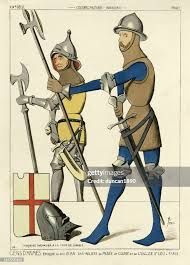
The Templar’s became very powerful, smart and influential. They invented the banking system, which was unheard of, and even Emperors and Kings had no knowledge, nor understanding of it. The Knights involvement in banking grew over time into a new basis for money, as Templar’s became increasingly involved in banking activities. Inventing, what we call today ‘Cheque’; a pilgrim could visit a Commandary in their home country, depositing the amounts of money they intended to use for their journey. The Templar’s would then give them a “Lettre de valeur” which they could present at any Commandary on the way of their travel towards the Holy Land. Withdrawing amounts for food, accommodation, and entertainment was easy and with a new, amended cheque they could continue their trip.
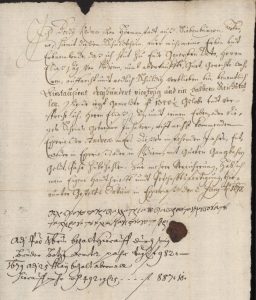
In 1306 King Philip of France, deep in debt; borrowed a number of times money from the Templar’s, until he realized he would not be able to ever pay back any Sou. He started intrigues to denounce the Order and eventually grabbed their wealth. In rural France, at dawn on Saturday, the 7th October 1307 many Templar Knights were arrested and later tortured in locations such as the tower of Chinon
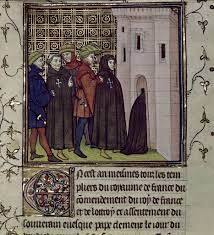
to admit heresy by order of King Philip. 3 days later, on Tuesday the 10th; the Grandmaster Jacques de Molay and three other high-ranked Templars were formerly instructed to come to Paris to meet the King. On Friday the 13th (*) October 1307 those four Knights were questioned and threatened with torture if they don’t tell the truth. Later, they where official arrested and charged of idolatry and corruption.
(*) Friday the 13th, know as ‘Black Friday’ is a superstition, created in 1955!
King Philip made up unfounded charges against the Templar’s to justify his actions. Many of those charges were identical to the charges that had been issued earlier against the inconvenient Pope Boniface VIII. The Templar’s reached out to Pope Clement V for assistance, and he did write a letter to King Philip questioning the arrests but took no further action. With more accusations from King Philip, Pope Clement issued Pastoralis Praeeminentiae, which instructed all Christian monarchs in Europe to arrest all Templars and seize their assets. Most Monarchs didn’t believe the charges and disregarded the Pope’s instructions.
In France, the Templar Knight’s were prosecuted and many of them were killed and burned at the stake.
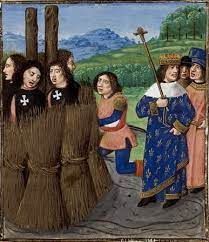
11.05.1310 – Fifty-four members of the Knights Templar were burned on the stake for being heretics.
03.04.1312 – At the second council of Vienne, the Order of the Templar Knights was suppressed.
18.03.1314 – Jacques de Moley, the 23rd Grandmaster of the Order, was burned at the stake on a small island, in the middle of the Seine river, called Square du Vert-Galant in Paris, close to the Church of Notre Dame. Ironically on this island, there are two statues, one from Jacques de Moley and the other one from King Philip IV. facing each other.
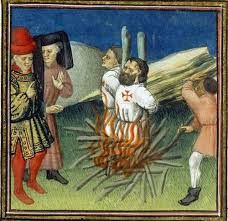
At that time, many of the pope’s accountants were Templar Knights, they did not get persecuted, but just took off their white Mantel (reverted to normal monks) and continued their job.
Many other Knights fled into different countries where the Pope and King Philip had no reach, but they remained TEMPLAR KNIGHTS in their Heart.
Modern History of the Templar Knights.
1705 France:
In March of 1705, a number of French Nobles held a convention of Templars at Versailles. They elected Philip, Duke of Orleans, later Regent of France, as the Orders 41st Grandmaster. Thus as Regent of France and Grandmaster of the Temple, it provided an official renewal and legitimization of the Order of the Temple as a secular Military Order of Chivalry and also its right to resume the use of ‘sovereign’ in its title. After the death of the Duke of Orleans in 1723 three princes of Bourbon were Grandmasters of the Order until 1776. In that year the Duke of Ciss Brissac accepted the Grandmastership and remained in Office until his execution during the French revolution in 1792. Having foreseen the upcoming events, he passed on the Orders archives and Charter of transmission to Radix de Chevillon. The Order survived the revolution and went through a period of prosperity in France (and its occupied territories in Europe, including Austria’s capital Vienna). During the 18th century, many people of high office asked to be admitted.
1796 See ‘About us and our History’
1818-1841, the Order expanded greatly with over 20 new commandries in France and Great Britain, Germany, Belgium, and Switzerland. Associated offices were also established in Sweden, Brazil, India and in New York.
In 1940, when France and Belgium were invaded by Germany, Earl von und zu Lach and Freiherr von Schweiger decided to safeguard and ensure the survival of the Order, they handed over their portfolio’s to Antonio Campello Pinto de Sousa Fontes in Portugal, who became the Regent until resignation due to ill health.
In 1946, after 4 years in abeyance, the Order was taken over in dubious circumstances, by Fontes’s son. Since then many Grand Priories disenchanted with Portuguese leadership, have claimed Autonomous status.
In 1989, the ‘IFA’ (International Federative Alliance) was formed with a number of mainly European and some South American member Priories, headed by Spain.
In 1995, the Atlantic Obedience, known under the Latin name of the Order; OSMTH (Ordo Supremus Militaris Hierosolymitani), was formed with Priories from both sides of the Atlantic, headed by the USA. In England, there were two Priories, each with allegiance to one of these organization.
In 1997, the two Priories merged, having nominal allegiance to both the IFA and OSMTH.
In 1998, the first two organizations had each set itself to elect a Grandmaster of the Order. Unfortunately, they could not agree over procedures. The OSMTH appointed Sir Roy Redgrave as temporary Master at an international meeting in Turku, Finland.
In 1999, it was decided to sever the relationship with IFA and become fully affiliated to OSMTH. There is a third world affiliation, the OIMT (Ordo Internationalis Militae Templi) Confederation. An English Priory belongs to this group. Also in this year, the IFA ‘elected’ Don Fernando de Toro Garland as Master.
In 2001, the Templar Knights (OSMTH only) were accredited as a non-governmental member to the United Nation, with the status of Observer and Adviser within the assembly, and are seated in New York and Geneva.
